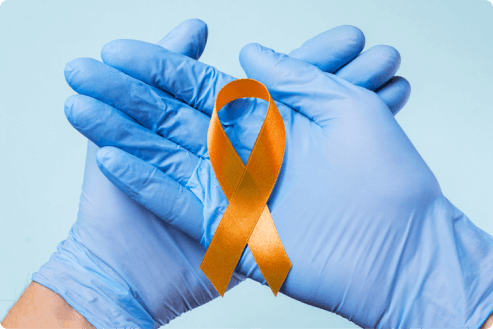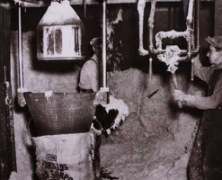Leukemia
Leukemia is a type of cancer that affects blood and bone marrow. Risk factors associated with the disease include certain blood disorders and congenital syndromes, and exposure to radiation or toxic substances.

Asbestos and Leukemia

Repeated exposure to hazardous substances appears to be one risk factor for leukemia. Workers in industrial settings, such as asbestos workers, tire repair workers and soybean farmers, are considered to be at especially high risk for developing leukemia because of occupational exposure to toxic materials.
Many of these work environments have been known to contain varying levels of toxic substances including asbestos. Workers who have been exposed to asbestos over an extended period have shown an increased development of related diseases.
According to data gathered by the National Cancer Institute in 2019, around 61,780 new cases of leukemia are diagnosed in the U.S. each year. The five-year survival rate is approximately 60.7%. This cancer occurs most commonly in people over 66 years old.
Four Types of Leukemia
- Acute lymphocytic leukemia
- Acute myelogenous leukemia
- Chronic lymphocytic leukemia
- Chronic myelogenous leukemia
Determining whether or not a person has leukemia, as well as the specific type that is present, often requires a specialized medical professional to perform a bone marrow aspiration and biopsy.
A number of risk factors also help doctors diagnose the disease including a family history of leukemia, the presence of certain blood disorders or genetic diseases, smoking and exposure to high levels of radiation and certain chemicals that may include asbestos.
A 2022 research study concluded that low doses of ionizing radiation in early childhood and maternal exposure to general pesticides during pregnancy showed convincing evidence of an association with childhood acute lymphocytic leukemia.
Occupations Associated with Increased Risk of Leukemia
A 2001 study, titled “Occupation and leukemia: A population-based case control study in Iowa and Minnesota,” concluded that workers among specific industries had an increased risk of developing leukemia than those who did not work in such environments.
These industries include agricultural settings, nursing, janitorial environments and a wide host of others. The belief is that some substances that are present in the mentioned work environments can yield harmful effects.
Asbestos Exposure and Leukemia
One of the first studies to associate asbestos exposure with leukemia was published in 1979 and involved three patients with heavy occupational exposure to asbestos.
Of the three, two of whom were also diagnosed with asbestosis, all were found to have chronic lymphocytic leukemia. The culmination of these two relatively rare illnesses caused some consideration of a common cause for the conditions.
A 2005 study explored a similar question after a patient with leukemia developed mesothelioma as the result of heavy asbestos exposure. The only common substance found in both the bone marrow and the mesothelioma sample was asbestos.
Myelocytic Leukemia
Additionally, two case studies were taken into account for a 1988 report on the potential causal relationship between asbestos and acute myelocytic leukemia.
The patients were both found to have elevated levels of asbestos bodies (asbestos fibers wrapped in an iron-rich coating) in their lungs. The first patient exhibited 39,800 of the fibers in every 5 grams of lung tissue, while 15,800 bodies were found in every 5 grams of lung tissue in the second patient.
Almost all of these fibers were found to be crocidolite asbestos, which is thought to cause cancer more often than some other forms of asbestos.
The patients with leukemia – but not the patients in the control group – were also found to have asbestos bodies lodged in their bone marrow, which suggested that the lymphatic route may transport asbestos once it has entered the body. This hypothesis requires further analysis to give a concrete correlation between asbestos and leukemia.
In another study by the same researchers that analyzed the relationship between malignancy and asbestos, five out of 10 cases of leukemia were associated with asbestos exposure.
Asbestos Association
Multiple studies demonstrate some form of an association between asbestos and the disease that further suggest that asbestos fibers contribute to cancerous changes once they reach the lymph nodes.
However, several studies have yet to find concrete evidence for a relationship between the two. With that being said, further research is necessary to better understand any potential association.

Get help paying for mesothelioma treatment by accessing trust funds, grants and other options.
Get Help NowWhat You Can Do
As more research is performed on the causes and treatment of leukemia, it becomes vital for anyone that may have the risk factors or signs of this disease to get the most relevant information on the topic. Furthermore, seeking guidance from a medical professional is always advised, as they may be able to determine what risk factors, such as asbestos exposure, may have contributed to the development of the disease.
As with many asbestos-related illnesses, symptoms and signs may not be noticeable for decades. Therefore, proactive screening and creating a regular dialogue between you and a medical professional is always recommended.
Recommended Reading


